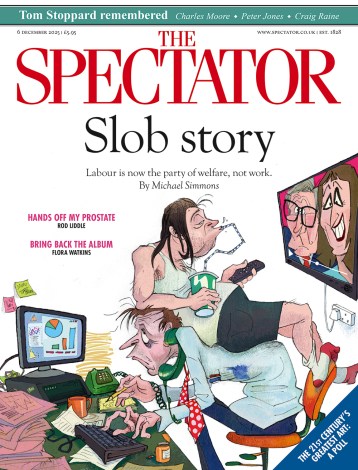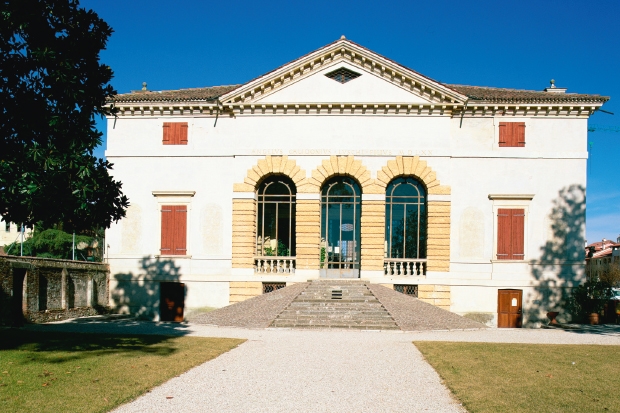Somewhat magnificently, I made the notes for this article sitting in the back of a Rolls-Royce travelling between London and Goodwood. It’s a journey that provides ample evidence of how the classical language of architecture, at least in Palladio’s version, has infiltrated our imaginations and informed our concept of grandeur.
I find Palladio’s spirit in the stately shell of the Rolls-Royce’s radiator, which apes a classical portico, in the famous Sussex country house itself, and in a bottle of Château Margaux: this finest of wines is made in a property of Palladian design. You can see it on the label.
Palladio was the finest classical architect of them all, but he was much more than a slavish classicist. He was an imaginative editor of architectural history, a synthesiser of genius, a self-publicist and a building designer who could create divine proportions and serene spaces without neglecting the question of the leaking roof. His buildings are quietly beautiful: a Palladian villa appears to be how the Almighty, in his role as Great Architect of the Universe, wanted things ordered.
A new exhibition, whose design by the architects Caruso St John was inspired by Palladian interiors and whose colourways reflect the frescoes of the Villa Caldogno, makes even more ambitious claims about its subject. It says, for example, that Palladio is the only architect to have an entire movement named after him. This is not quite justified. José Benito de Churriguera, for one example, gave his name to the Churrigueresque, the elaborate Hispanic baroque.
And surely nowadays Corbusian and Miesian are as loaded with meaning as a groaning lintel. What is certainly true is that, like Le Corbusier and Mies, Palladio was easy to copy, so spread like an infection. Unlike with Corb and Mies, the copies usually work. What is also certain about Palladio is that no architect has been the subject of more scrutiny by historians: the new exhibition follows a huge Arts Council show of 1975 and the Royal Academy’s muddled celebration of his 500th birthday in 2008.
Andrea di Pietro della Gondola was born in Padua. He was a stonecutter by trade, but that artisan calling did not hobble his ambition. He soon found himself in the circle of the local humanist, Gian Gorgio Trissino, who had him work on a villa. It was Trissino who re-branded della Gondola as ‘Palladio’, a reference to Pallas Athena and suggestive of near-divine ability. After this change of personal identity, Palladio set about re-branding architecture itself. It was not only Italy he liberated from the savage Goths, but the rest of the known world too.
Palladio never built anything outside his native Veneto, yet any one of these creations — let’s say the sublime Villa Foscari at Malcontenta — would have been enough to secure immortality. Like many of his designs, it was a high-concept farm — a sort of paradisiac perfection with a top note of dung. But his reputation was leveraged by the publication of his great book, I quattro libri dell’architettura. No one, least of all Palladio himself, had a clue what Roman domestic architecture looked like, so with great authority and scholarship, he invented it.
The grand house with a classical portico is no less than a Palladian invention. If you look at the Quattro libri today, you see an enthralling, densely illustrated catalogue of details and plans. But it was a practical guide to building more than an abstract and theoretical thesis. It became the most influential architectural book of all time and the greatest ever influence on taste.
This influence was particularly strong in England and America. Thomas Jefferson, an architect as well as a president, called it ‘The Bible’. The English, especially eager to be liberated from the lowering Goths, adopted Palladio as a national style. This began when Sir Henry Wotton, ambassador to Venice, brought Palladio drawings back from Italy. These were then acquired by Inigo Jones, our first modern architect, and eventually passed into the collection of Lord Burlington, whose villa in Chiswick, by the old Cherry Blossom roundabout, is England’s greatest omaggio to the Palladian.

One rationale for the new exhibition is that 2015 is the 300th anniversary of the first English translation of the Quattro libri and of Colen Campbell’s Vitruvius Britannicus, the vast album of architectural designs which codified Palladio for architects and builders. Wilton House, Holkham Hall and Stormont are all, to a degree, Palladian designs. So too is Inigo Jones’s Queen’s House in Greenwich, England’s first classical building. There were churches too. James Gibbs’s St Martin-in-the-Fields migrated to India, where it appeared as St John’s Church in Kolkata in 1784. You could say, and the exhibition does not hesitate to do so, that the White House and Lutyens’s Viceroy’s House in New Delhi are Palladian too. Sweden’s Gunnar Asplund with his stern Nordic geometry was also Palladian. Certainly, from a quiet corner of Veneto where he died in 1580, Palladio became the first global architect. The year before his book appeared in English, George I took the throne: the revered Georgian architecture is Palladian.
In the fading light of Modernism, Palladio demands certain questions are asked. Is architecture formulaic? Are there simple rules which, if diligently followed, will result in a successful design? Have novelty and invention been over-rated in the past century? Do proportions and plans matter more than details and finishes? Since absolutely everyone adores the Georgian architecture that Palladio inspired, is it ever worthwhile fussing about anything else? Was architectural perfection realised in the Veneto in the 16th century and every search for an alternative since has been misbegotten vanity?
Palladio’s contemporary followers only partially answer these questions and then not always well. Robert Adam designs Palladian villas, often with ‘minimalist’ interiors to provide his clients with a little cognitive dissonance. The great pasticheur Quinlan Terry has internal floors crossing windows at Richmond Riverside, a solecism that no Vicentine master-builder would have tolerated. A country house by Terry in Hertfordshire was completed on Palladian principles in 1971. It lacks the understated dignity and restraint of any original. Rather like a bad dream, it is queasily out-of-time rather than timeless.
Modern Palladianism looks Soviet — stiff, dogmatic, ham-fisted and unlovely where it does not look Highgate vulgarian. A 2005 cottage by Christine Franck, an American architect not yet 50, on Figure Eight Island in North Carolina, is an example. It is not a lively design but a corpse. Somehow the essential spirit of Palladio is lost in supine copyism. Genius loci, intelligent use of materials, practical utility and fine proportions arranged in good light are the essence of Palladianism. Which is just to say that Palladio himself was a very great architect and his followers less so. I make an exception for Stephen Taylor’s concrete-columned cowshed of 2012 at Hadspen, a Palladian house in Dorset. This is nearer the essence of Palladio than any highfalutin portico or humourless curlicue.
I think this exhibition may prove something very unexpected in certain quarters and circles: Palladianism is defunct. Thinking about modern Palladians, I like what Ben Lerner said of self-styled poets ignoring the death of poetry: they are ‘…an embarrassing placeholder for an art no longer practicable… a dead medium whose former power could be felt only as a loss’. Yup, we have lost the old Palladio. Time to find a new one. Taste was Palladian, but taste changes.






Comments